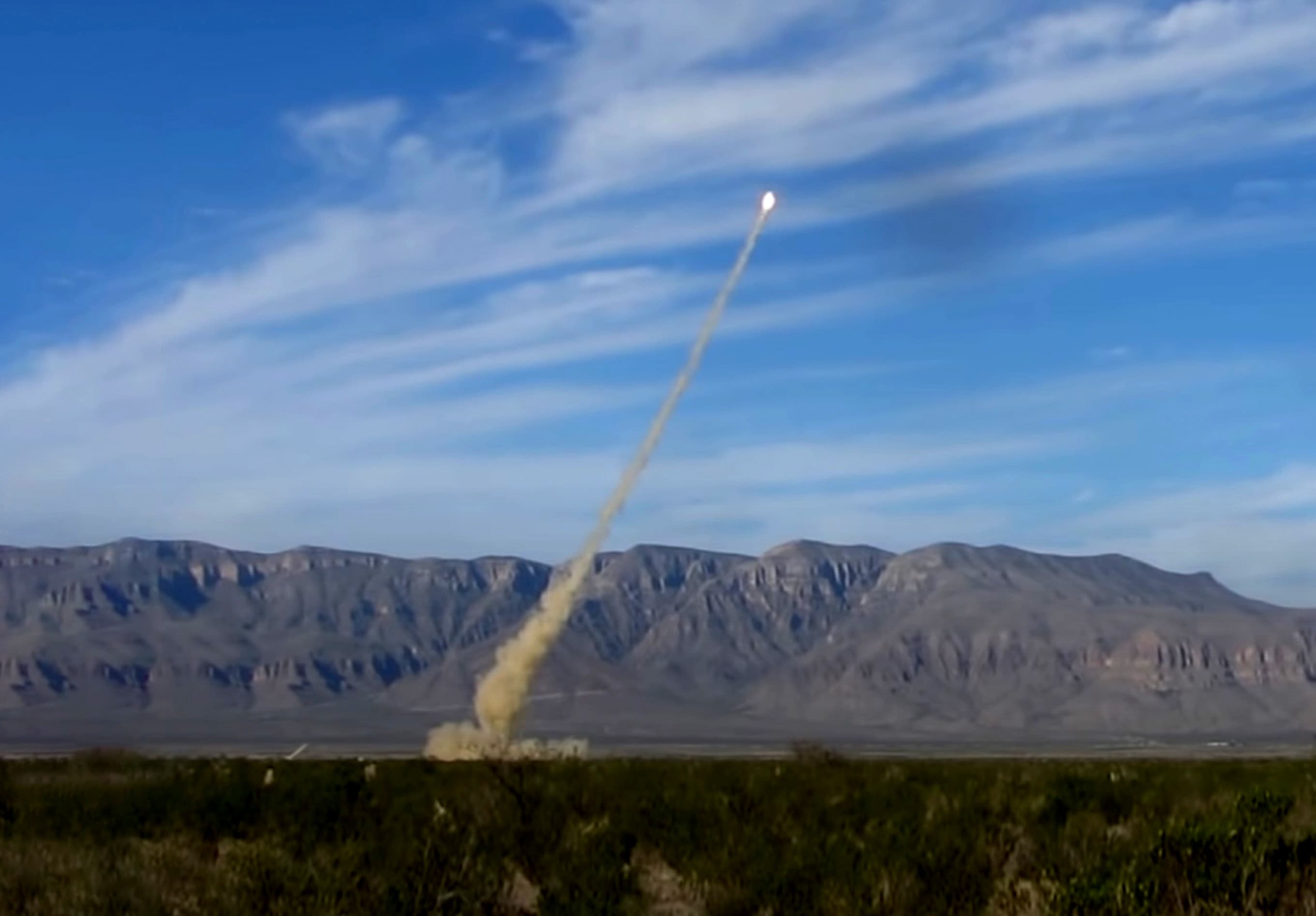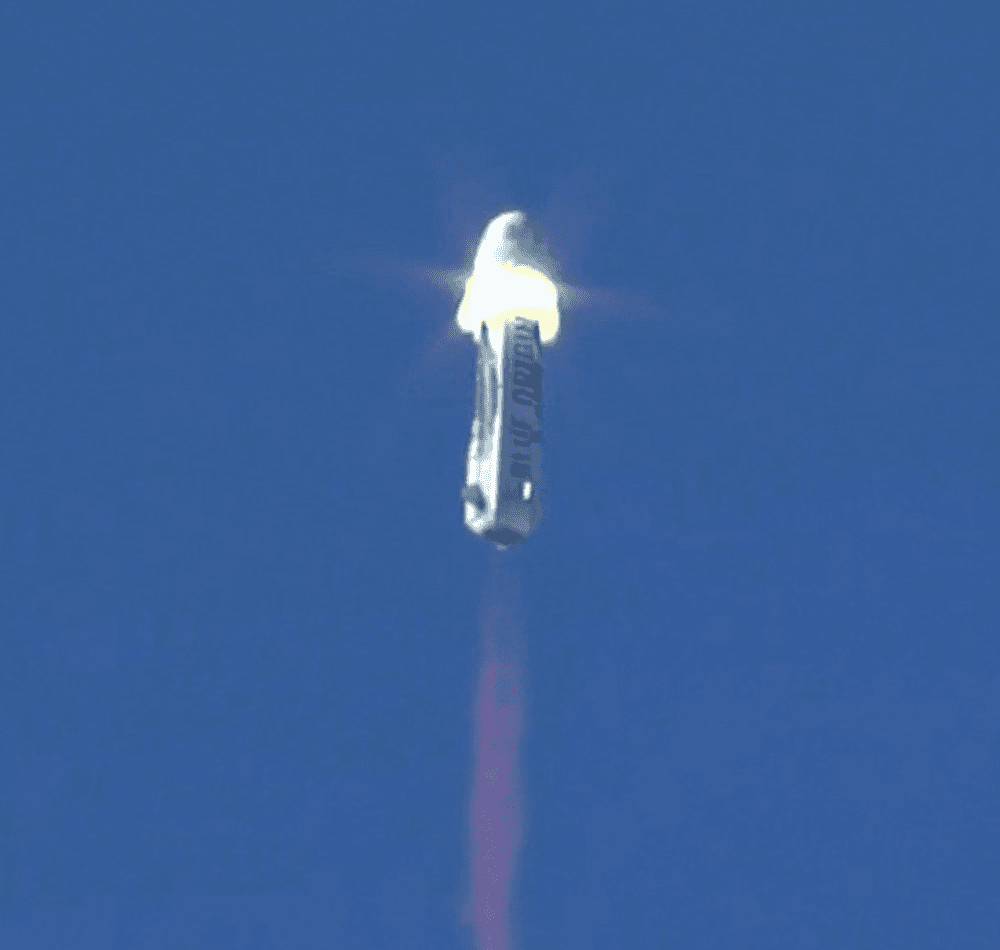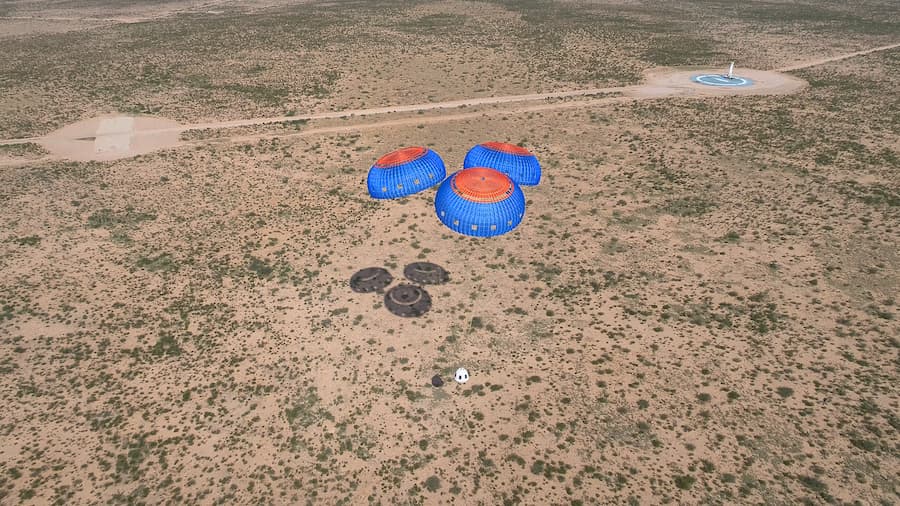Record of Safety

Our Highest Priority
New Shepard’s development flight test program concluded in 2021 following 16 consecutive successful flight tests, including three successful capsule escape tests, demonstrating that the crew escape system can activate safely during any phase of flight.
New Shepard Development Flight Test Program
Escape Test
October 19, 2012
Successful test of the crew escape system from the pad.
NS-1
April 29, 2015
First successful New Shepard launch and crew capsule return.
NS-2
November 23, 2015
First booster in history to successfully launch and land.
NS-3
January 22, 2016
First booster in history to successfully be reused.
NS-4
April 2, 2016
Successful re-flight of vehicle.
NS-5
June 19, 2016
Safe capsule landing with two of its three chutes deployed.
NS-6
October 5, 2016
Successful test of the crew escape system at maximum dynamic pressure (Max-Q).
NS-7
December 12, 2017
First flight of new vehicle and the first with commercial payloads.
NS-8
April 29, 2018
Successful re-flight of vehicle.
NS-9
July 18, 2018
Successful in-space test of crew escape system.
NS-10
January 23, 2019
Successful re-flight of vehicle.
NS-11
May 2, 2019
Successful re-flight of vehicle.
NS-12
December 11, 2019
100th payload launch to space.
NS-13
October 13, 2020
NASA lunar landing sensor demo mounted on booster's exterior; successful re-flight of vehicle.
NS-14
January 14, 2021
First flight of new vehicle.
NS-15
April 14, 2021
Test program concludes with second successful flight of vehicle.
NS-16
July 20, 2021
First successful crewed flight with four people on board; commercial operations begin.
Crew Escape System
Three Successful Escape Tests

Drawing from the Mercury and Apollo programs, New Shepard is equipped with a crew escape system that separates the capsule from the booster in the unlikely event an issue is detected. The system has been tested three times successfully: from the launch pad, mid-flight, and in the vacuum of space, demonstrating that the system can activate safely in any phase of flight.
Back-Up Systems
Redundant Safety Systems

The crew capsule has numerous redundant safety systems. Just before touchdown, a retro-thrust system at the bottom of the capsule expels a burst of nitrogen gas to slow the landing to ~2 mph (3.2 km/h). Additionally, the capsule can land with only one of its three parachutes deployed, and a crushable ring on the bottom of the capsule is designed to absorb g-forces, as are the seats.
